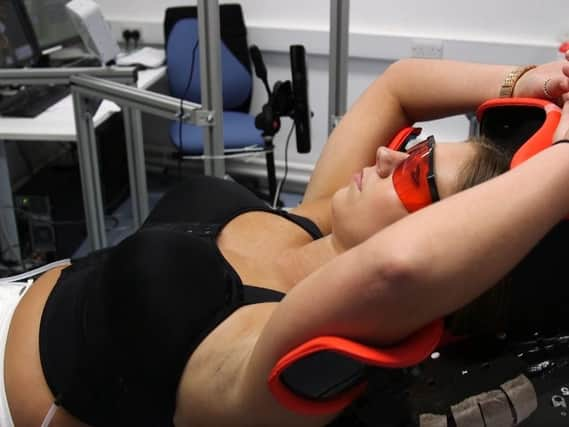Breakthough bra design honour for Sheffield Hallam team


The bra helps women undergoing radiotherapy. The SuPPORT 4 All project led by a team of health experts and designers from Sheffield Hallam is honoured for its pioneering work that aims to improve accuracy of treatment and also help patients maintain dignity during radiotherapy.
Funded by the NIHR through its Invention for Innovation Programme and delivered in partnership with Sheffield Teaching Hospitals and Panache Lingerie, the project team have developed a bra that allows accurate positioning of the breast on a day-to-day basis.
Advertisement
Hide AdAdvertisement
Hide AdThey say this may also reduce the radiotherapy dose received by organs that lie close to the breast such as the lungs and heart in some patients.
Pro vice-chancellor for research and global engagement at Sheffield Hallam, Professor Roger Eccleston, said: 'It is a fantastic achievement for the University to be featured in the UK's Best Breakthrough list. We're extremely proud of the work of our academics and the difference they are making to people, lives and communities.
"Sheffield Hallam specialises in healthcare research and its practitioners, scientists, engineers and designers regularly collaborate to create innovative solutions to global health challenges.
'The MadeAtUni campaign is an incredibly important initiative for Sheffield Hallam as it allows students, alumni, the local community and the wider population to understand the work that we do and the impact it has.
Advertisement
Hide AdAdvertisement
Hide AdHeidi Probst, professor of radiotherapy and oncology at Sheffield Hallam is leading the SuPPORT 4 All project. She said: "I am very proud of this work and I am delighted that it has been recognised in this way. Every day around 150 women in the UK will be told they have breast cancer. Globally around 1.5 million women are diagnosed with the disease annually. So with over 80% of women surviving breast cancer beyond five years, improving the delivery of treatments and reducing side effects for women living beyond their cancer could have a huge impact.
"As part of our study and design process we have consulted with women who have undergone treatment and are in various stages of recovery. From these discussions we know that having the ability to wear a bra during treatment can be key in maintaining dignity, which would vastly improve the patient experience during a particularly difficult time.'
Professor Dame Janet Beer, President of Universities UK, said: 'Universities really do transform lives. The technology we use every day, the medicines that save lives, the teachers who inspire '“ all come from UK universities and the important work being done by academics.
'The UK's Best Breakthroughs list is a testament to the difference that universities make to people's lives and we want everyone to join us in celebrating the work they do.'
Advertisement
Hide AdAdvertisement
Hide AdThe team say that apart from aiming to improve accuracy, the bra should improve dignity and modesty for patients during radiotherapy treatment, since, in the majority of radiotherapy centres worldwide, women are required to expose the affected breast during treatment. Currently practitioners across the globe rely on the use of permanent pin point tattoo marks alongside laser systems, to position the patient under the radiotherapy beam. The bra may remove the need for these marks which often concern patients.
Â
Â
Â
Â
Â
Â